Olson Kundig places movable studio on rail tracks in Washington State
Seattle firm Olson Kundig Architects has created a studio attached to a primary residence in Washington, which sits on railroad tracks that allow it to completely detach.
Called Maxon Studio, the project comprises a two-storey weathering-steel structure constructed as an office for the client's branding agency in Carnation, Washington.
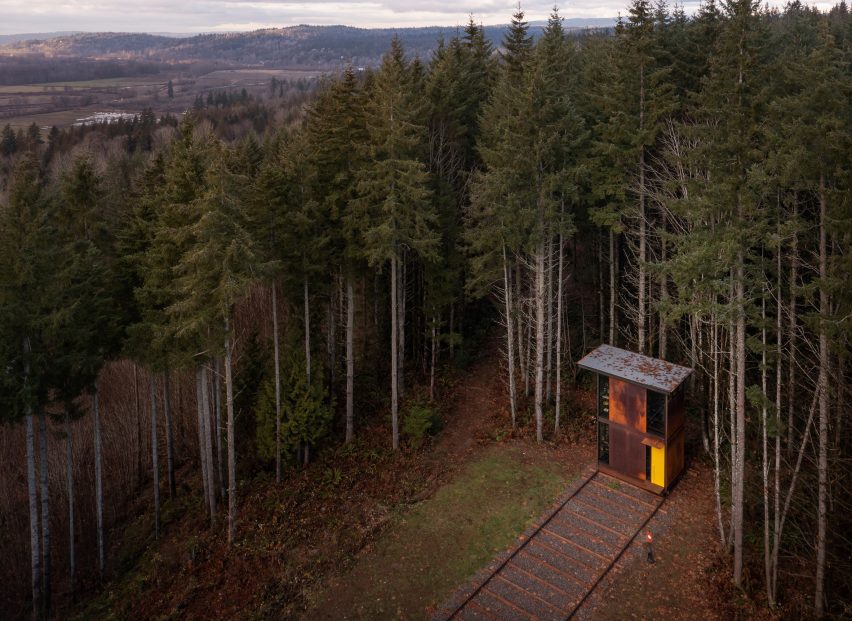
The studio was built on top of 15-foot-gauge railroad tracks so that it can either be a "nested" addition to the client's home, or move away to become an independent structure.
The client, Lou Maxon, was also the general contractor on the project and worked with Olson Kundig Architects to allow for the studio to move back and forth on the rails.
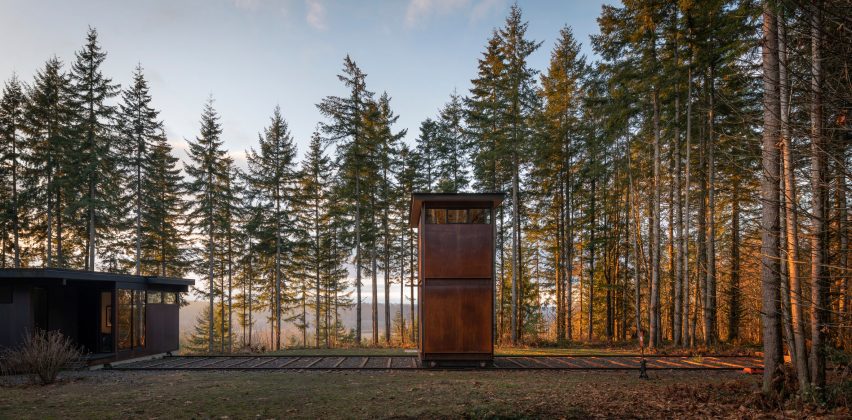
"It’s a beautiful object, beautifully fabricated, but moving it along the track is another experience entirely," said Olson Kundig Architects design principal Tom Kundig.
"What Lou and Alpine [Welding] were able to achieve with reconfiguring the electronics of the control panel and elegantly allowing the electrical connection to unspool behind the studio is absolute brilliance," he added.
"It’s a prime example of taking an idea 60 per cent or 70 per cent of the way, and then stepping aside to let an expert bring it fully to life."
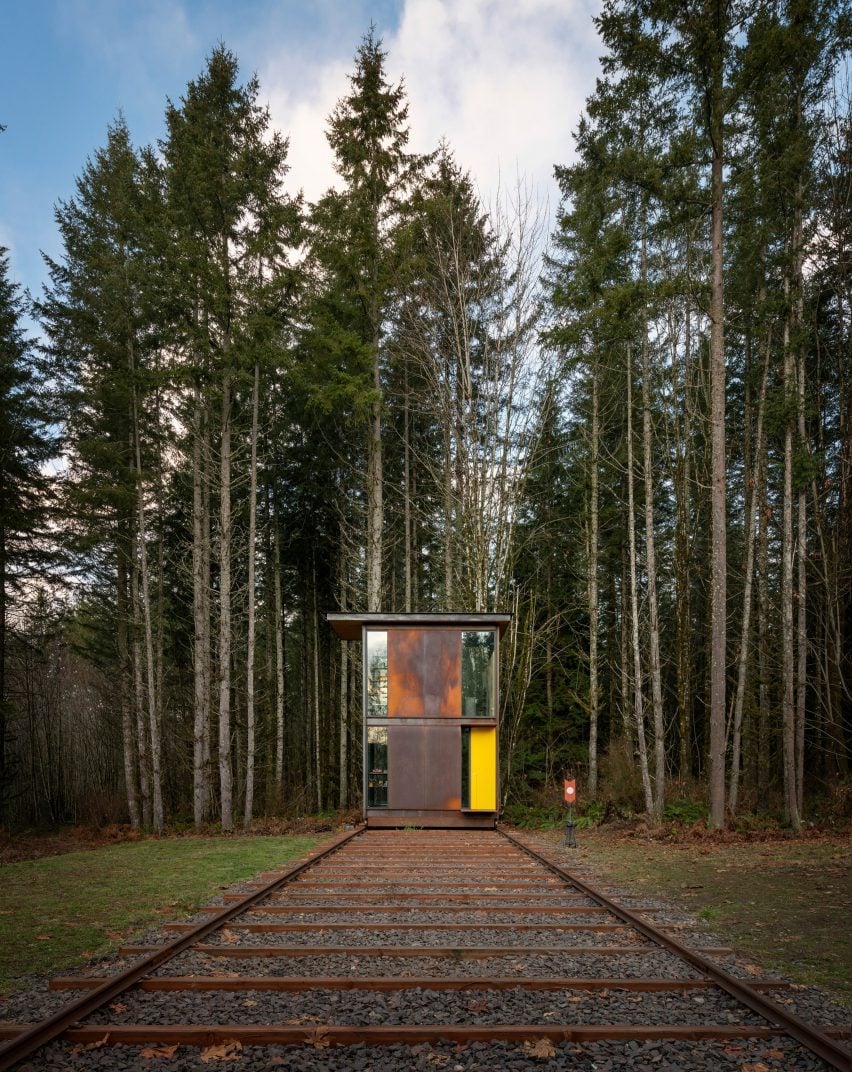
Besides the functional aspect of the rails, other elements of railroad design were implemented in the project, as an ode to the "legacy of the rail industry in the local region", the studio said.
The two-storey structure was based on the design of the "traditional caboose". A workspace sits on the first level while the second, accessible via a steel ladder, serves as a cupola for taking in views and functions as a "calmer zone for creative exploration and restoration".
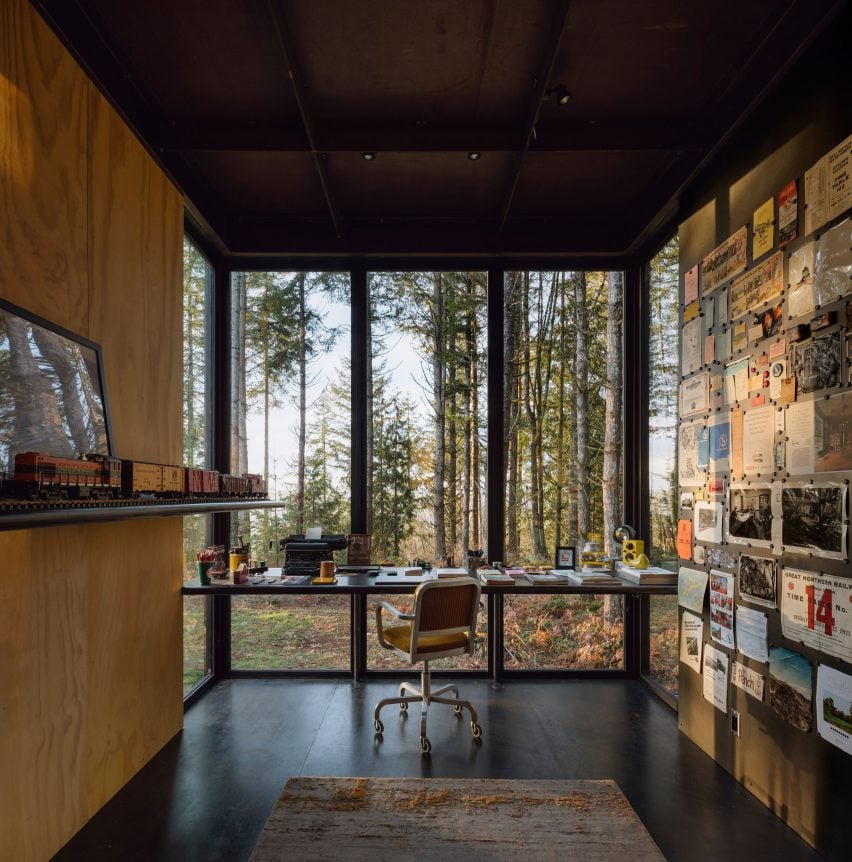
The control panel that operates the rails was taken from a Burlington Northern locomotive, while the door colour and the wood used were directly informed by colours and materials commonly found on American trains.
The railroad ties for the track were repurposed from the Great Northern Railroad line, though the studio noted the steel tracks "are a much larger gauge than is typically used".
Also implemented was a stabilizing bar that will prevent the tower from tipping during an earthquake, similar to those found on trains used for Japanese high-speed railways.
Inside, the studio features a steel wall and a built-in desk. The rest of the walls are wood and, on the wall with the ladder, there is the control panel with a stool.
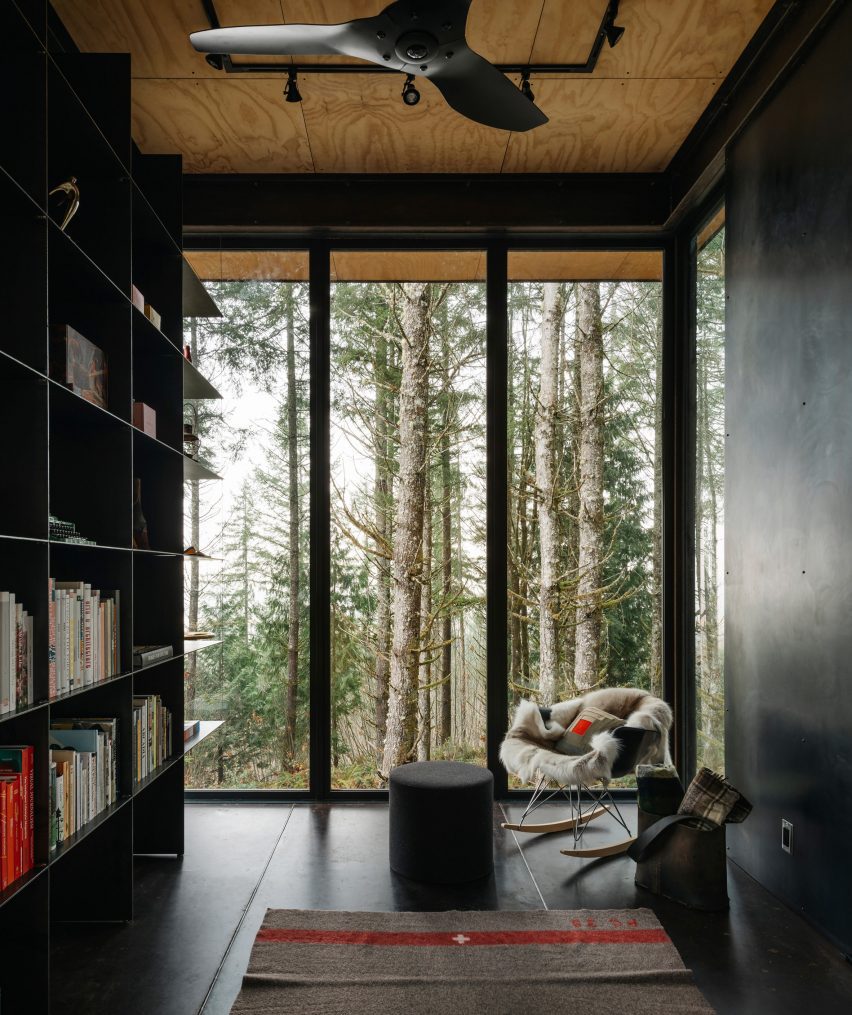
The second storey has the same material scheme with wood and steel walls, as well as a built-in bookshelf.
A dumbwaiter was included to ferry heavier items up and down between the levels.
Olson Kundig Architects was founded by Jim Olson in 1966. Its recent work includes designs for a human composting facility in Seattle as well as a home in Austin with cantilevered walkways.
The photography and videography is by Aaron Leitz.
Project credits:
Project Team: Design principal: Tom Kundig; principal: Edward Lalonde; gizmologist: Phil Turner
Client and general contractor: Lou Maxon
Steel fabrication: Alpine Welding
Structural engineer: MCE Structural Consultants